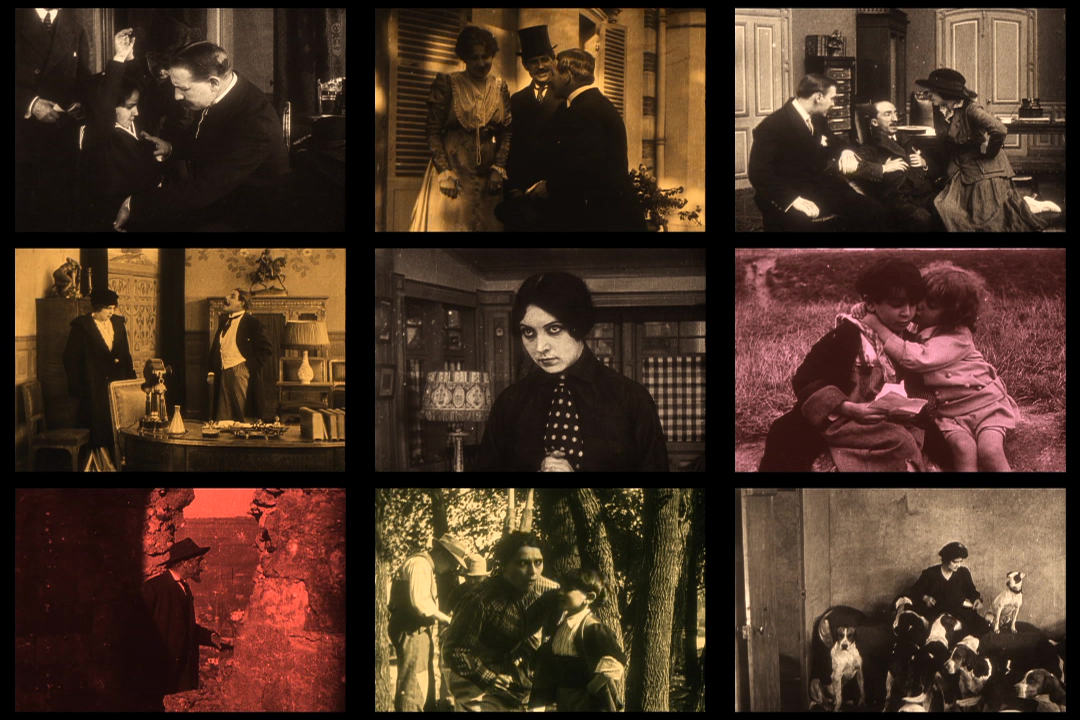
GESTUS:JUDEX
羅海德
(2012 / GESTUS version 1 was exhibited in the Writing Machine Collective edition 4 exhibition 文字機器創作集第4輯, January 14-30, 2011, Hong Kong)
單頻道投影、LCD Video, Projector, LCD
在GESTUS (德文是表情、儀態的意思)的作品系列中,藝術家自製軟體,對於資料庫中的錄像進行動態的向量分析,在影像片段之間,尋找框內微運動相近的影像,把它們並列,構成一個九個視窗的錄像裝置作品。最中心的是Judex(1920年代法國的連續劇默片)5個多小時全片的播送,環繞中心視窗的8個影框,是實時的配對,軟件程式計算並識別出影片中具相似的微運動的部分,作分析性的組合;觀眾因此得以用特殊的方法看Judex,一面看這個經典作品,一面參與藝術家的視覺分析。
GESTUS 開啟了「微動作」的領域,關注於每一個細微的動作,像是睫毛和手指的動作。這跟主流故事片以情節推展為一切的電影觀念大相逕庭,因後者往往磨滅了活動影像的直接呈現的威力。作品引導觀者投入主動的視覺思考的過程,使得觀眾更為專注地觀看,覽獵作品中每一個影像之間的之間的相近和差異性這樣,觀眾於感知上的付出就成為向量機器運作不可或缺的組成部分。當觀者凝視著著九個影窗,嘗試著辨識類似的動作時,可能會感到焦慮、煩躁、不安。有些時候,觀者可以輕易地辨出異同之處。也有些時候,由於畫面的內容擁擠,情境大異,不易看出微動作的走勢;這時,觀眾就得接受感觀上的進一步挑戰。某一個影框接近底部的一隻手落下的姿勢,也許對應於另一個影框靠左邊緣的依傍著的肩膀;觀看這活動忽然變成了遊戲。這個系統牽引、質疑、甚至挫折著觀者的認知感知能,把描繪、摹寫推至極限。
GESTUS:JUDEX
Hector Rodriguez
Video, Projector, LCD
Gestus consists of a custom software that generates a vector analysis of the movements of videos in a database, identifying sequences that contain similar similar micro-movements.
Gestus opens up the domain of micro-movement, focusing attention on the tiny motion of an eyelash or a finger. It cues the viewer to engage in an active process of visual thinking, scanning the images in an effort to identify the similarities between them. Her perceptual effort becomes an integral element of the vector machine. The viewer’s gaze becomes restless as it scans simultaneous images, attempting to identify analogous movements. Sometimes, the viewer easily detects similarities between the various images. In other cases, however, the movements are very subtle and occur in different areas of a crowded image, posing a sharper perceptual challenge. Perhaps a dropping hand near the bottom of one image corresponds to a leaning shoulder near the left edge of another. The viewer’s gaze becomes restless as it scans simultaneous images, attempting to identify analogous movements. The system invites, challenges, and sometimes frustrates the spectator’ s cognitive-perceptual skills.
